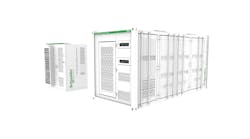By Elisa Wood
February 19, 2009
The ink is dry on President Obama’s signature to the federal stimulus bill and word is out that energy efficiency receives more than $20 billion. How will homeowners and businesses benefit?
Two sources offer an excellent break-down on the incentives: the Alliance to Save Energy and the Office of Energy Efficiency and Renewable Energy, a unit of the US Department of Energy. EERE goes so far as to give the page numbers in the bill that address certain incentives.
Here is a snap shot of where some of the energy efficiency funds will go.
Housing & Buildings
- $5 billion for low-income weatherization assistance, plus an expansion of people who are eligible. An increase in the funding level to $6,500 per home.
- About $4.75 billion to Housing and Urban Development for public, low-income and Native American housing
- Tax credit for existing homes extended and increased to 30 percent of cost, up to $1,500 for 2009 and 2010
- About $8.9 billion for federal buildings, including $4.5 billion for green buildings and $3.6 billion for Department of Defense energy efficiency initiatives
Appliances
- $300 million for the Energy Star Program and for matching grants to states that offer rebates to consumers for buying Energy Star appliances.
Technology
- $4.5 billion for smart grid projects
- Up to $2.3 billion allotted for a 30 percent investment tax credit given to those who manufacture renewable energy, energy storage, energy conservation, efficient transmission, and carbon capture and sequestration items.
Transportation
- $400 million to encourage the use of plug-in hybrids
- $17.7 billion for public transportation and rail
- $2 billion for the manufacture of advanced batteries
Other
- $3.1 billion for state energy programs and $3.2 billion in block grants for local governments
- $500 million to prepare workers for jobs in renewable energy and energy efficiency
- $9.75 billion for public safety and other government services, including renovation to “green” schools
Further details are available at http://ase.org/content/article/detail/5388 and http://apps1.eere.energy.gov/news/enn.cfm
Visit Elisa Wood at www.realenergywriters.com and pick up her free Energy Efficiency Markets podcast and newsletter.






